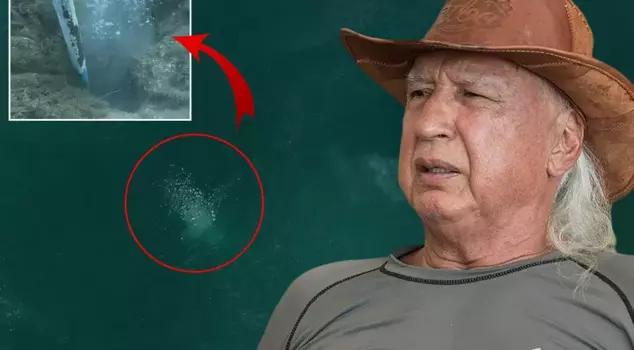
20.11.2025 12:52
Bubbles formed along the fault line in Sapanca Lake have raised concerns. Experts from Sakarya University, who came to the area for an investigation, stated, "We cannot say that this is a precursor to a major earthquake. Earthquakes of up to magnitude 5 should always be expected along a fault line that produces earthquakes greater than 7." Prof. Dr. Şener Üşümezsoy had previously pointed to Sapanca, calling it the "real danger."
Bubbles formed in some parts of Sapanca Lake were captured from the air and underwater. Fishermen who opened their boats to the lake from the Serdivan Gölpark area noticed the formation of bubbles in the water and shared the footage they took on their social media accounts.
EXPERTS CONDUCTED AN INVESTIGATION IN THE AREA
In response, Prof. Dr. Murat Utkucu, the head of the Department of Geophysics at Sakarya University, and professional divers came to the area to observe. Utkucu and the divers, who set out on the water by boat, conducted an investigation in the area where bubbles formed at several points about 300 meters offshore. The divers recorded the area where the bubbles emerged with an underwater camera. The bubbles formed in the lake were also captured from the air.
"WE CANNOT SAY 'IT IS A SIGN OF A MAJOR EARTHQUAKE'"
Prof. Dr. Murat Utkucu told reporters that they were investigating the lake. He noted that the North Anatolian Fault Line passes through the lake and that there are steps beneath the lake. Utkucu stated, "This is an event occurring on the fault line. Natural processes are observed along fault lines where water and gas emissions occur. It has come up as 'Is it a sign of an earthquake?' The characteristic earthquake of this fault line is an earthquake greater than 7. This earthquake greater than 7 occurred in 1999. For this fault line to produce this characteristic earthquake again, more than 100 years must pass. Therefore, from this perspective, we cannot say 'it is a sign of a major earthquake.' However, independently of this observation, we should always expect earthquakes of magnitudes 5, 4, and 3 along the fault line that produces earthquakes greater than 7, and we should be prepared for this." he said.
"WE MUST ALWAYS BE PREPARED FOR EARTHQUAKES OF MAGNITUDE 5-4"
Utkucu emphasized that changes in water levels and the emission of water and gas are among the indicators and elements that can be considered as signs of earthquakes, stating, "However, in seismology, earthquake predictions are not made by looking at a single indicator. A large number of indicators must show differences simultaneously, and these must be measured and clarified. Therefore, it would be scientifically incorrect to say 'an earthquake will occur' by looking at a single indicator. There is no need for concern; we are living through natural processes as always. As people living close to this fault line, we must always be prepared for earthquakes of magnitudes 5 and 4, whether there is water emission or not." he evaluated.
Utkucu pointed out that the decrease or increase in water levels can trigger earthquakes on faults, noting that the water level in the lake has significantly dropped. "All of these must be researched, measured, and based on data to support what is being said. Otherwise, what we are currently doing are general assessments." he stated.
Diver Bünyamin Erdoğmuş also noted that there is a cavity with a diameter of 50 centimeters at a depth of about 5 meters.
"I HAVE NEVER SEEN SUCH PRESSURE, I AM SURPRISED"
Erdoğmuş shared that they lowered the boat's oar into the water to measure the depth, stating, "The length of the oar is about 2.5 meters. The length of the cavity from which the air bubble emerged was approximately 2.5 meters. We are not experts in technical matters. We have seen bubbles in the water before, but I have never seen one with such pressure, and I am surprised." he said.
Güngör Demirci, who noticed the formation of bubbles in the water while opening the boat, stated that they expect a conclusion from the footage, mentioning that they have encountered similar situations in the lake but expressed that the "boiling" here is excessive.
WHAT DID PROF. DR. ŞENER ÜŞÜMEZSOY SAY?
Earthquake expert Prof. Dr. Şener Üşümezsoy explained the orientation of the North Anatolian Fault in the region, stating that the real danger extends along the Sapanca line, not beneath the Sea of Marmara.
Üşümezsoy stated, "The Sapanca line is an important transition point that determines the direction and effect of energy accumulation in the region. The North Anatolian Fault extends from the Gulf to the Hersek Cape through Sapanca. This line plays a key role in the earthquake mechanism of the Marmara region." he said.